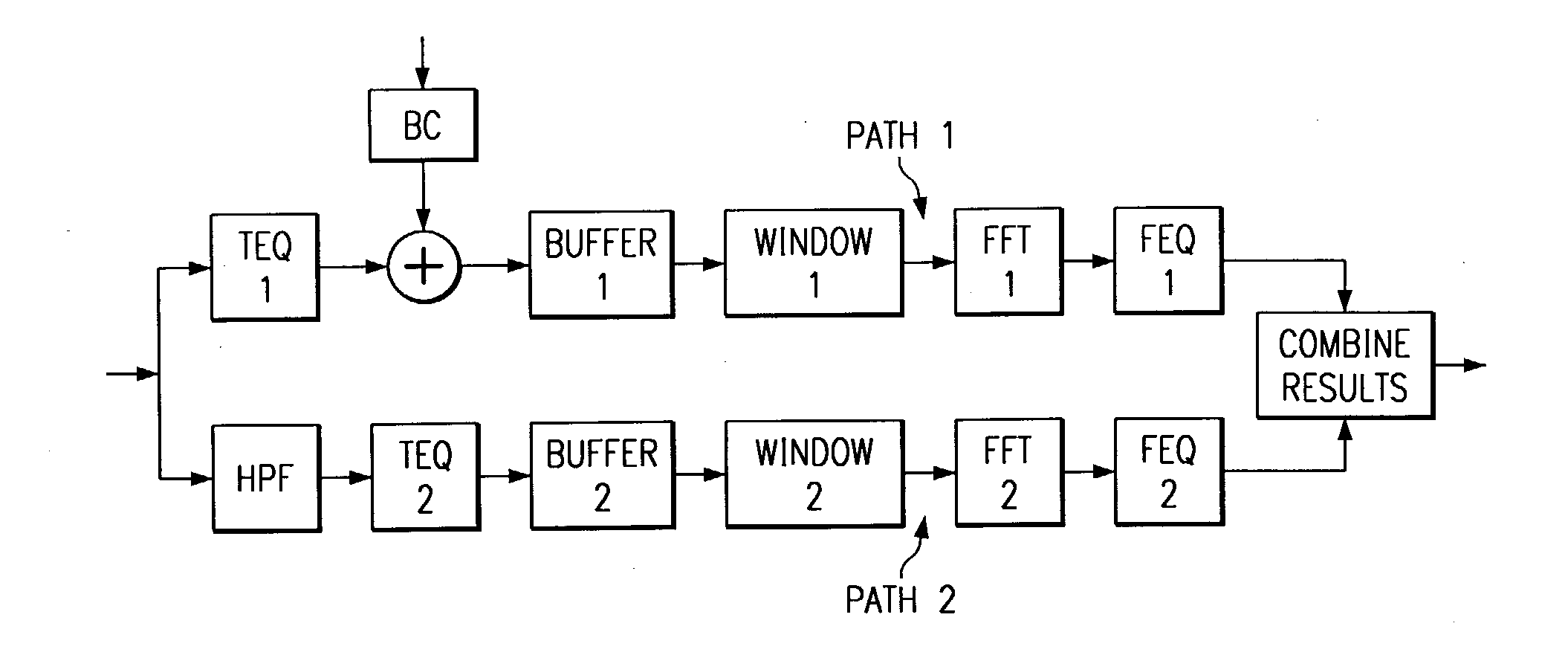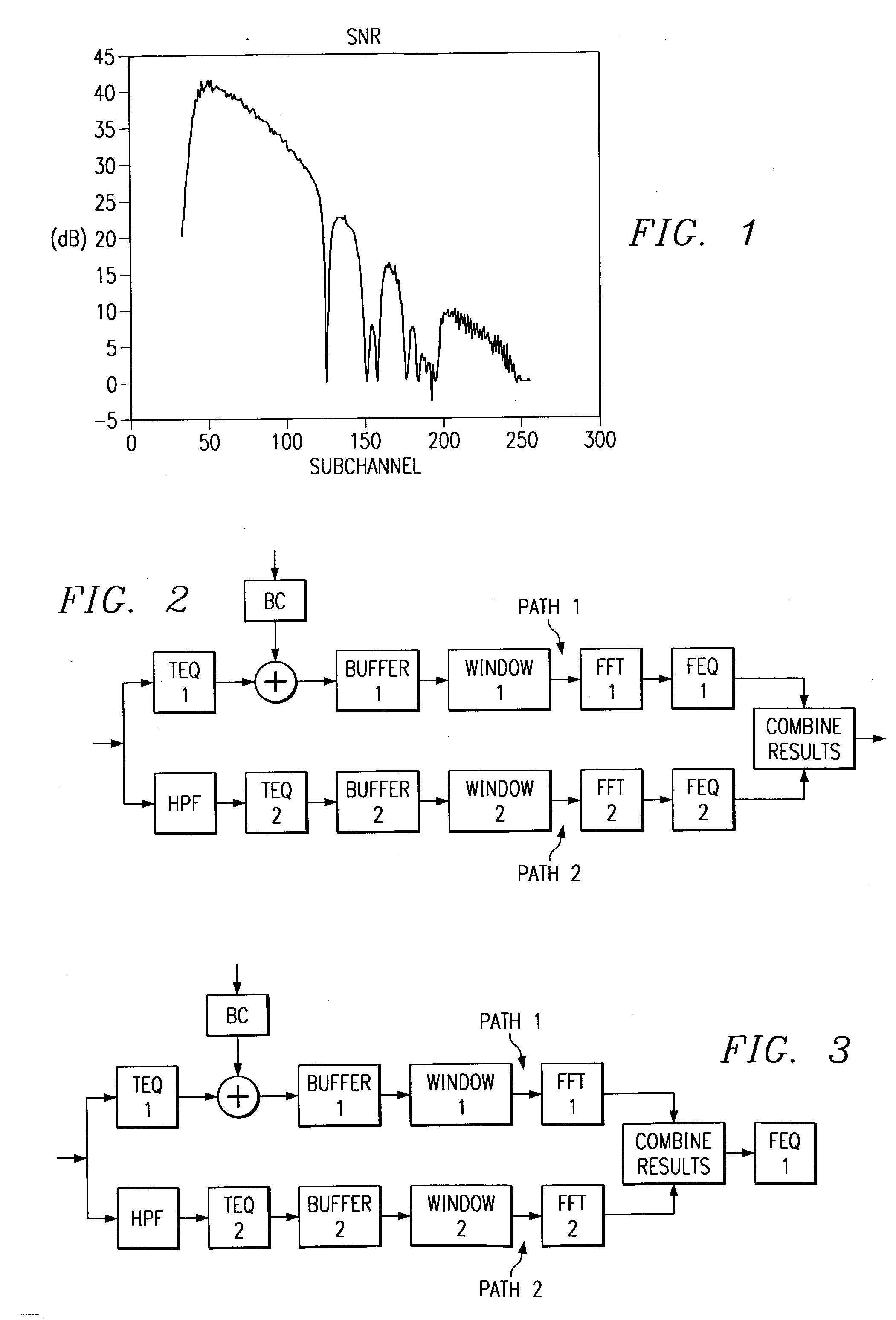Multiple path equalization for multicarrier systems
- Summary
- Abstract
- Description
- Claims
- Application Information
AI Technical Summary
Benefits of technology
Problems solved by technology
Method used
Image
Examples
Embodiment Construction
[0011] Design Philosophy
[0012] The basic teaching behind the design of the dual path equalizer is to divide the channel into two parts, each part dominated by a different type of impairment. The first equalization path is optimized for one part of the channel, and the second equalization path for the other part of the channel. TEQ design techniques such as minimum ISI, minimum mean squared error (MSE), eigenvector based, least squares (and adapted variants), and maximum bit rate methods can be used to design the TEQs used in the different parts of the channel.
[0013] For a FDD ADSL system operating on a typical wireline channel, this can be done for the downstream by dividing the downstream portion of the channel into the downstream region near the transition band, and the downstream region higher up in frequency. The transition band or region is the region of the channel that separates the upstream subchannels and the downstream subchannels. For example, if subchannels 6-31 are used...
PUM
 Login to View More
Login to View More Abstract
Description
Claims
Application Information
 Login to View More
Login to View More - R&D
- Intellectual Property
- Life Sciences
- Materials
- Tech Scout
- Unparalleled Data Quality
- Higher Quality Content
- 60% Fewer Hallucinations
Browse by: Latest US Patents, China's latest patents, Technical Efficacy Thesaurus, Application Domain, Technology Topic, Popular Technical Reports.
© 2025 PatSnap. All rights reserved.Legal|Privacy policy|Modern Slavery Act Transparency Statement|Sitemap|About US| Contact US: help@patsnap.com


